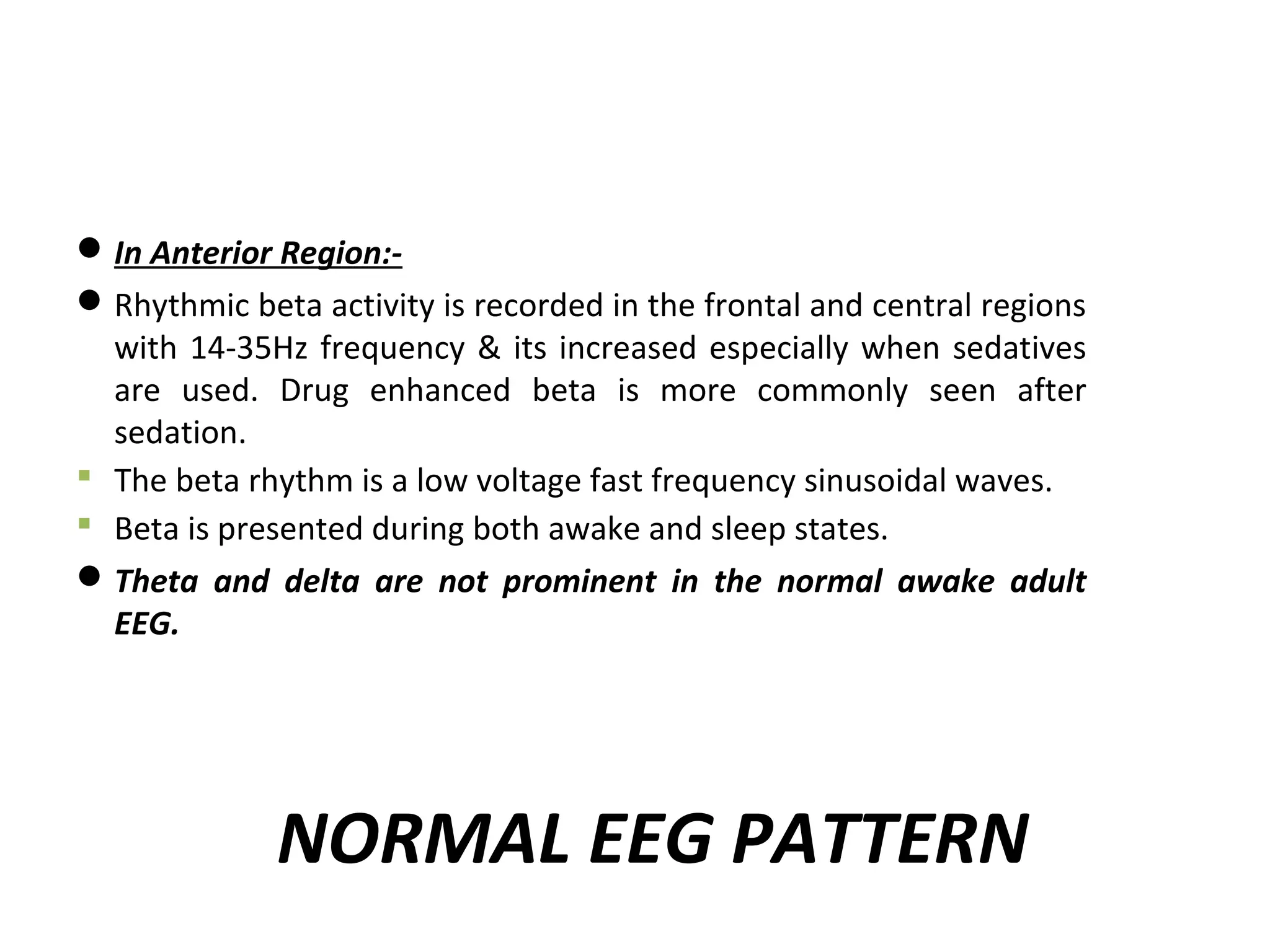The document discusses normal EEG patterns in various age groups from neonatal to adulthood. In neonates, the EEG pattern depends on gestational age and includes discontinuity in premature infants. In infancy and early childhood, the posterior dominant rhythm increases in frequency and reactivity emerges. By adolescence, the EEG begins to resemble the adult pattern with less delta activity. The normal adult EEG shows an alpha rhythm over the occipital lobe that attenuates with eye opening. Theta is only present in sleep while delta is never seen in awake adults.




































